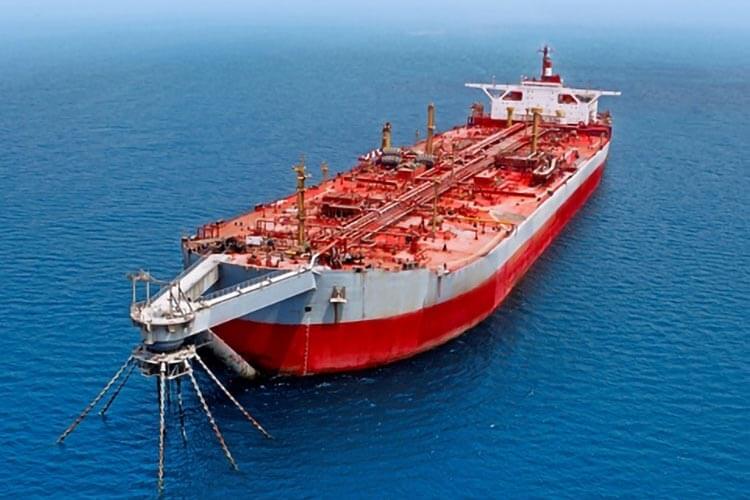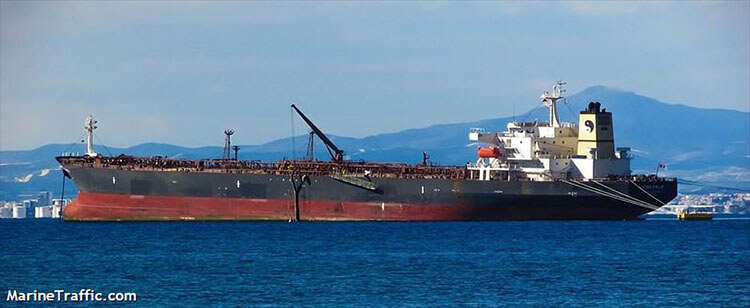
A newly published report in the journal Frontiers in Marine Science is calling for action to prevent an ‘imminent’ ecological disaster in the Red Sea, as the remains of an abandoned oil tanker off the coast of Yemen threatens to leak more than 1 million barrels of oil into the water.
The 350m-long Floating Storage/Production (FSO) tanker Safer was built in Japan in 1976 as an ultra-large crude oil carrier but was bought by the Yemeni government and converted into a stationary FSO vessel in 1986. For the last 33 years, the Safer has been moored approximately five nautical miles off the coast of Yemen where it stores and redistributes crude oil transported from Yemeni oil fields via a 430km-long pipeline.
Yemen has been engaged in civil war since 2014, chiefly between the currently recognised government and armed Houthi political rebels, who seized the region in which the FSO Safer is moored in 2015, since when the ship has not been inspected or maintained. Estimates suggest that as much as 157,000 tonnes of crude oil remain in its holds – four times the amount shed by the Exxon Valdez in Alaska’s Prince William Sound in 1989, widely considered to be the world’s most environmentally damaging oil spill.
The article states that the situation is now critical, after seawater was reported to have entered the engine room in May of this year, and a 25 September article in maritime journal Splash 24/7 reported that Saudi Arabian authorities have warned that an ‘oil spot’ has been sighted around the decaying tanker.

‘A 1-million-barrel leak guarantees a regional environmental and humanitarian disaster,’ writes lead author Karine Kleinhaus, Associate Professor of the School of Marine and Atmospheric Sciences at New York’s Stonybrook University. ‘Devastation to the health and livelihoods of millions of people living in half a dozen countries along the Red Sea coast would be assured. The air they breathe, the food they harvest at sea, and their water desalination are all at immediate risk. In addition, the oil spill will affect the rest of the international community by degrading a critical global resource. The coral reefs of the northern Red Sea and Gulf of Aqaba are understood to be among the last reef ecosystems in the world to thrive beyond mid-century. Our last chance to pump off the oil in the vessel and stockpile oil booms regionally to contain an imminent spill is quickly disappearing.’
Modelling of the oil spill dispersion pattern predicts that should the oil begin to leak, the Red Sea’s strong winter currents may drive the oil into Sudanese waters in as little as 30 days. The report’s authors point out, however, that this is only ‘ a conservative estimate’ and does not include the effects of wind and wave action which may greatly expand the affected area. ‘In addition,’ states the report, ‘when the model was run beyond 30 days, even greater dispersion was predicted.’
Environmental damage resulting from a potential oil spill may be further exacerbated by the enclosed nature of the Red Sea, which is connected to the Indian Ocean by a very narrow passage known as Bab El Mandeb (the Gate of Tears), meaning that most of the water contained by the Red Sea circulates within its shores far longer than it would in the open ocean.

Mathematical modelling using surface current data for February (left) and August (right) show how the oil spill, should it occur, may be dispersed during 30 days over the winter (Image: Kleinhaus et al/Frontiers in Marine Science)
All of the Red Sea is rich in highly biodiverse coral reefs – some of which, particularly in its southern reaches, remain relatively unexplored – and is also home to a number of endangered pelagic species. The southern Red Sea is known for large schools of hammerhead sharks, and one of the world’s largest seasonal gatherings of whale sharks occurs between November and February each year off the coast of Djibouti, on the opposite side of Bab El Mandeb from southern Yemen.
The New York Times reported on 25 November that Houthi leaders, after months of negotiation, have agreed – in principle – to allow UN inspectors to visit the stricken tanker. The UN’s spokesperson, Stéphane Dujarric, said that he had received a letter ‘indicating [the Houthi’s] approval for the UN proposal for the planned expert mission to the tanker.’
While Mr Dujarric is quoted as calling the development ‘an important step forward in this critical work,’ it may still take up to a month before the inspection occurs, and any attempt at salvage may be further delayed by the logistics of transporting industrial-scale equipment into a politically unstable region.
With some 4.8 million barrels of oil passing through Bab El Mandeb into the Red Sea on a daily basis, much of it bound for Europe via the Suez Canal, the report’s authors are calling for oil companies transporting their products via the Red Sea to make compulsory annual contributions to a ‘UN-mandated and regulated fund for spill mitigation’.
‘While regional efforts to mitigate oil spill damage may seem small in scale, such actions will have a substantial impact,’ states the report. ‘The UN, the IMO (International Maritime Organization), and global oil extraction, refinement, and shipping companies must immediately take action to protect the Red Sea and its critical marine resources by stopping this potentially massive and devastating spill.’
- Generations Below – a father-son team working to build a global underwater treasure hunt - 11 November 2025
- ‘Death ball’ sponge among 30 new Ocean Census species discoveries - 10 November 2025
- Thomas Kenny’s family launches fundraiser for inquest into his death - 7 November 2025


